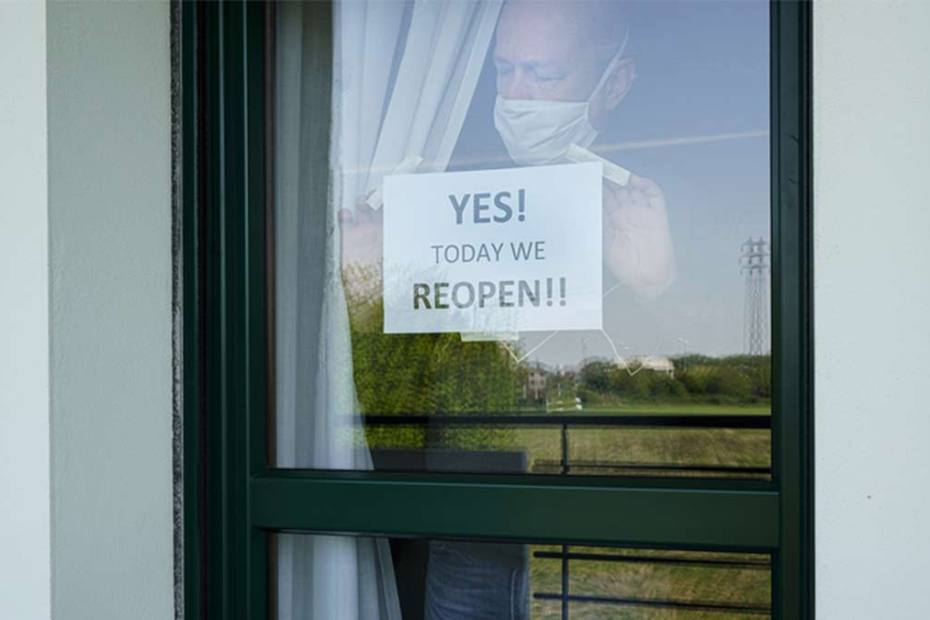Toolkit Resources to Help During the Outbreak
Our HR and Safety Toolkit, available to eligible Archbright members, has several resources to help you navigate the unchartered waters of the...
2 min read
 Archbright Team Member
:
May 13, 2021 9:00:00 PM
Archbright Team Member
:
May 13, 2021 9:00:00 PM

Over the past several days, Washington, Oregon, and Idaho have announced a gradual lifting of ”stay home” orders and reopening of non-essential businesses. In order to ensure the safety of employees and compliance with new requirements, employers must be mindful of federal and state guidelines before and during the reopening phases.
The CDC provides up to date COVID-19 guidance and recommendations for employers and employees, including an updated list of symptoms, self-checker, and Interim Guidance for Businesses and Employers to Plan and Respond to Coronavirus Disease 2019.
OSHA has provided guidance relating to requirements employers must follow in order to safely re-open or remain open. Visit the OSHA COVID-19 page for up to date guidance. OSHA requires employers to assess occupational hazards to which their workers may be exposed. Employers should be conducting job hazard assessments to identify appropriate safety and PPE requirements for their business. Eligible members are encouraged to contact our Safety Hotline with any questions about conducting job hazard assessments.
Governor Inslee announced that the reopening of the State will occur in measured steps, guided by science, and dependent on the sustained decrease of the infection rate and increase of testing capacity. The Safe Start Washington plan outlines information about the governor’s phased reopening plan and industry-specific guidance for safe reopening. Business activities are not authorized to open until a business is able to meet all safety criteria. Guidance documents are available on the State’s Safe Start website page. Visit L&I’s guidance and resources for COVID-19 topics related to L&I.
Governor Little adopted guidelines that constitute a “data-driven approach to opening up Idaho’s economy.” Re-opening is phased using four increments, contingent upon review by the Idaho Division of Public Health and the Governor’s Coronavirus Working Group of syndromic, epidemiological, and healthcare criteria every two weeks to assess if criteria are met or continue to be met. Visit Idaho Rebounds website for an overview of the stages of reopening for Idaho employers and protocols for opening.
Oregon Governor Kate Brown announced Oregon’s Plan for Rebuilding a Safe and Strong Oregon, including new guidance for counties and businesses on the phased reopening process. In accordance with federal guidance, Oregon’s plan has three phases, with criteria and core preparedness requirements that must be met before moving to the next phase. Employers can view the most recent presentation on Phases for Reopening Oregon at coronavirus.oregon.gov.
As employers and employees prepare to return to work, communication and planning will be more important now than ever. Archbright is ready to assist members with all of the safety, HR, and legal issues. If you are an Archbright member, contact your Account Executive about using Archbright HR and Safety Consultants to assist with planning, communication, and training. Eligible members are encouraged to contact the HR Hotline, Safety Hotline, or legal counsel with any questions or to seek specific guidance. Eligible members may also access Archbright’s comprehensive KeyNotes, sample policies, and workplace posters available on the Archbright HR Toolkit and COVID Resources page located on the Members Only website.

Our HR and Safety Toolkit, available to eligible Archbright members, has several resources to help you navigate the unchartered waters of the...

Over the course of the COVID-19 pandemic, many employers allowed their workforce to perform their jobs remotely to mitigate the risk of exposure. Now...

As businesses previously forced to close move toward reopening or bringing furloughed employees back to work, employers must heed a disturbing trend...